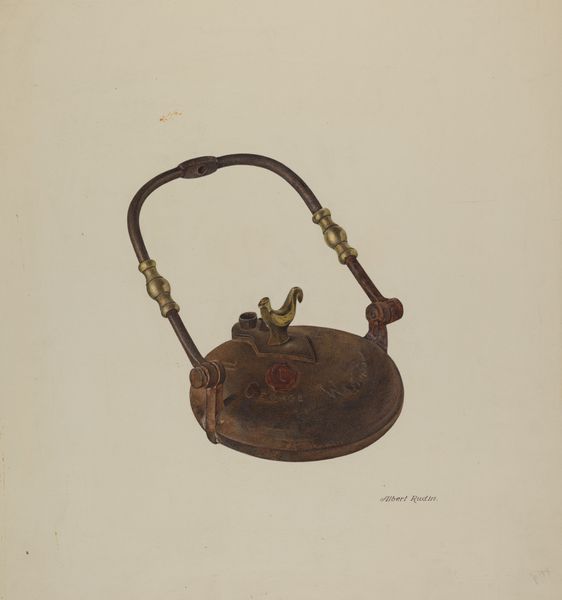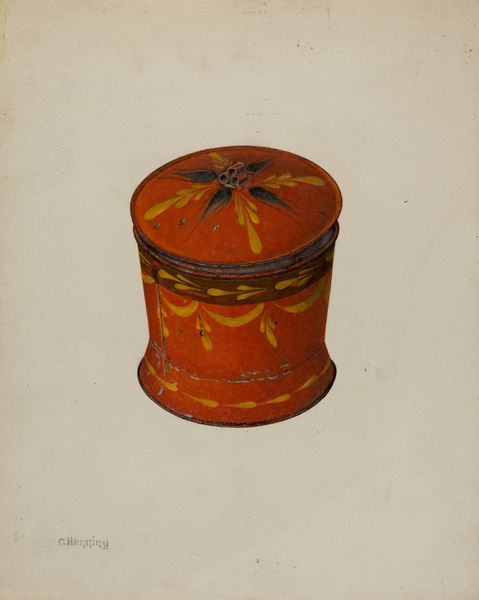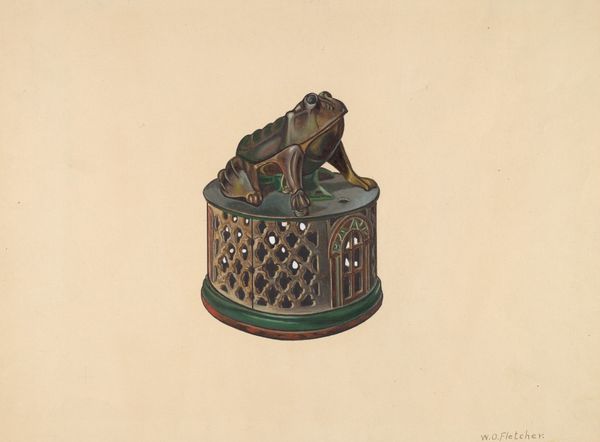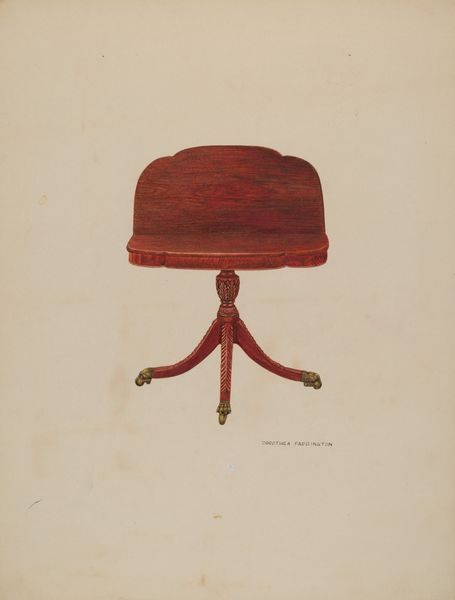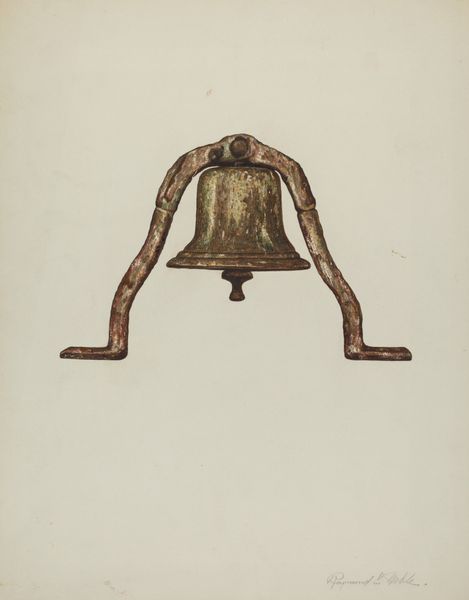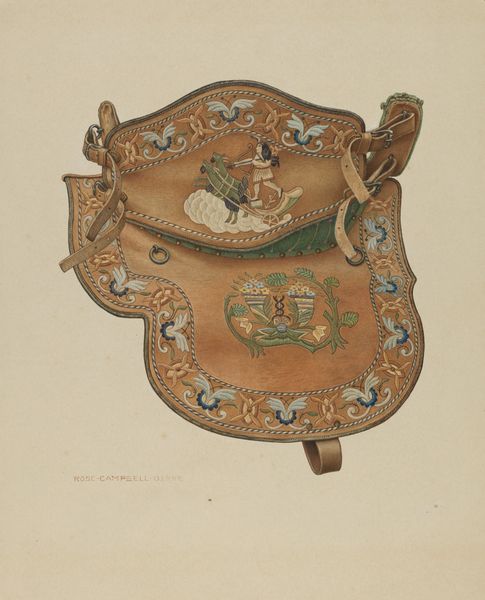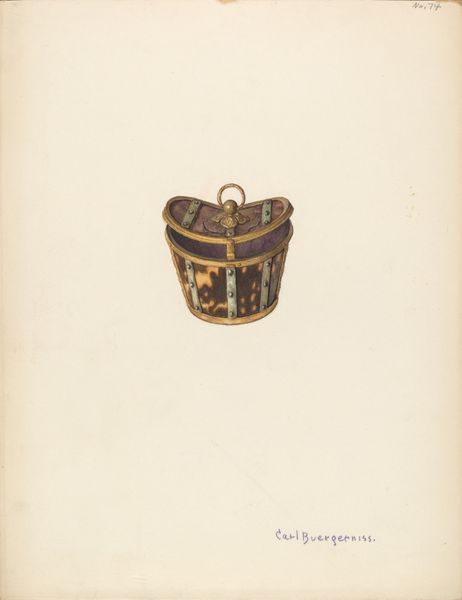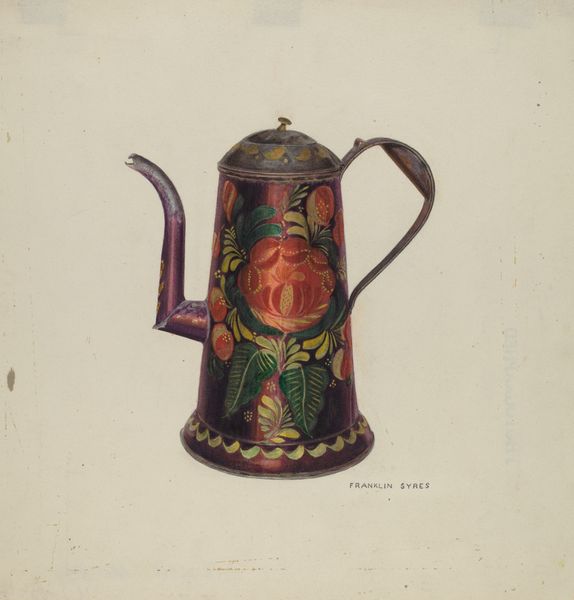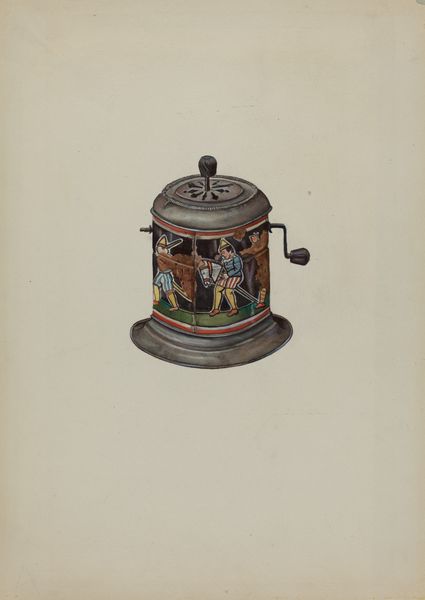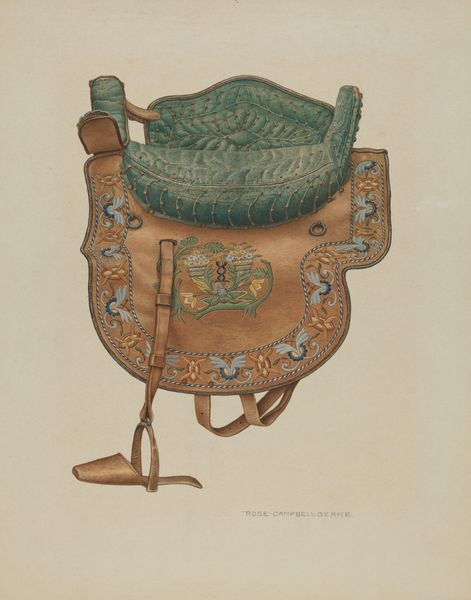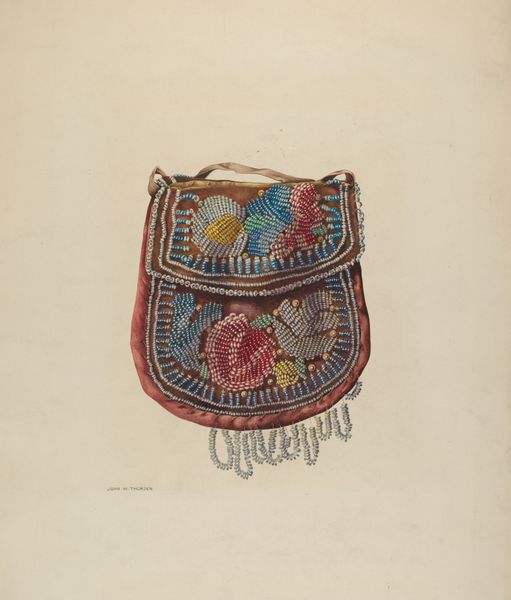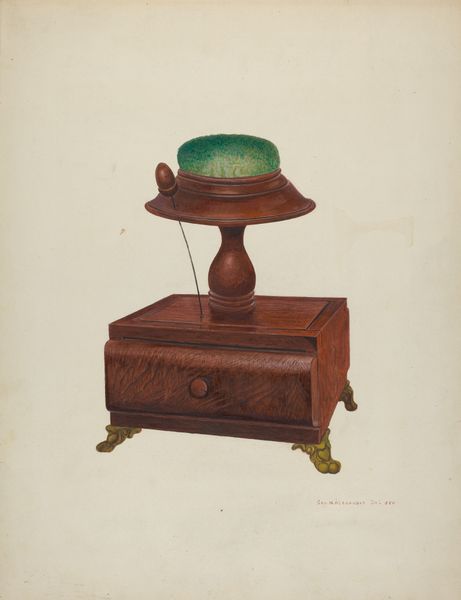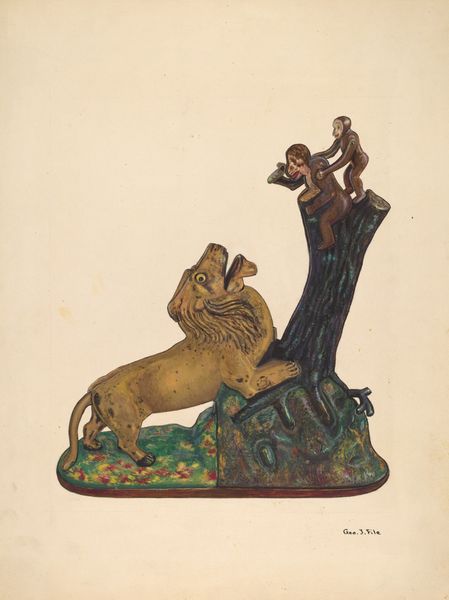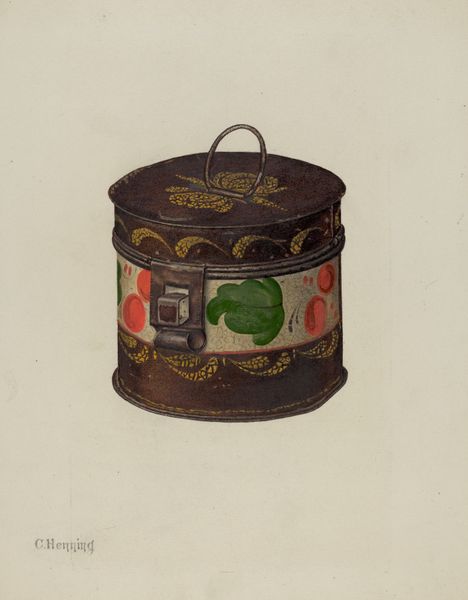
drawing, coloured-pencil, watercolor
#
drawing
#
coloured-pencil
#
watercolor
#
pencil drawing
#
coloured pencil
#
watercolor
Dimensions: overall: 39.6 x 32.3 cm (15 9/16 x 12 11/16 in.)
Copyright: National Gallery of Art: CC0 1.0
Curator: Before us is "Fireman's Hat," a drawing by Harry Jennings, dating from around 1937. It appears to be rendered with colored pencils and watercolor. Editor: The ornamentation is really something. There’s an interesting juxtaposition here; on one hand, the bold red signifies a purpose rooted in immediate, even dangerous action, and, on the other, it has this profusion of detail, the elaborate, gilded filigree... it’s almost baroque! Curator: Indeed, there’s a clear tension between the object’s functional purpose and its aesthetic presentation. The artist directs our attention to these aspects through compositional contrast, I suppose. The central placement, the hat nearly floating, and the stark white background make us contemplate the object-hood, you know? Editor: Well, think of what it represents—status, pride, maybe even defiance in the face of dangerous working conditions! Someone designed and manufactured this—a skilled maker. Was it mass produced? Was it custom-made? Were the decorations created separately, by other artists perhaps, then assembled? The entire *making* of the object seems fraught with questions of labor and craft. Curator: But it goes even deeper, right? Look at the way Jennings used color. The vibrant red isn't simply a functional requirement for visibility. It pulsates. The texture of the piece almost reminds us about the symbol of the fire—to see how it commands attention within the confines of the composition is so interesting to think about. Editor: Right, but think about the physical properties—consider this drawing as an invitation to consider the history of material culture around tools and protective gear for often-anonymous trades. Why was THIS particular fireman’s hat chosen? Was it worn by someone important? Has it been restored over time? How do changes to its composition suggest use over time? Curator: The drawing becomes almost diagrammatic when considering what you said—isolating this utilitarian object, inviting formal contemplation and scrutiny that transcend the object itself! Editor: Exactly, Harry Jennings prompts us to investigate both the aesthetic dimensions of craftsmanship, manufacture, and labor through close attention to these material conditions. It forces a meditation of its making—not only the firefighter that depends on the utility. Curator: A rich convergence between functional object and symbolic form. Editor: Absolutely, inviting a necessary conversation.
Comments
No comments
Be the first to comment and join the conversation on the ultimate creative platform.
